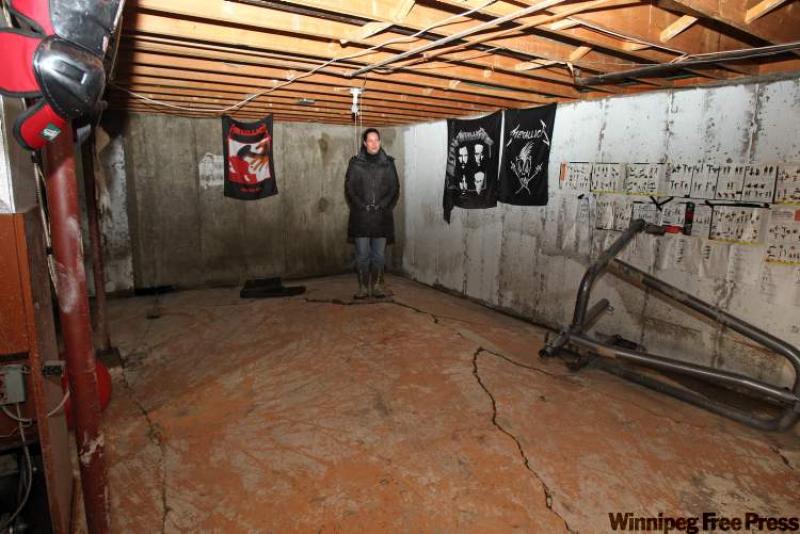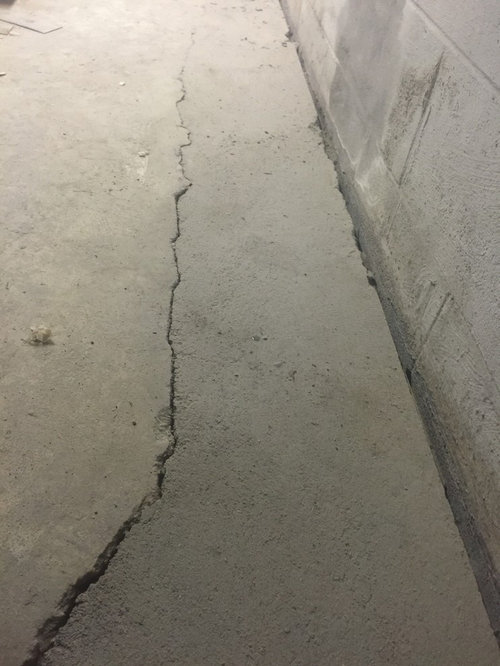Common Causes of Basement Floor Heaving
Basement floor heaving can occur due to a variety of factors, including poor drainage, soil moisture, and foundation issues. Understanding these common causes is crucial in determining the appropriate repair solutions.
- Poor Drainage: Inadequate drainage around the foundation can contribute to basement floor heaving. When water accumulates around the foundation walls or under the basement floor, it exerts pressure on the concrete, causing it to crack and heave. Poorly designed or clogged gutters, downspouts that discharge water too close to the foundation, or improper grading can all contribute to poor drainage.
- Soil Moisture: The moisture content of the soil surrounding the foundation plays a significant role in basement floor heaving. Expansive soils, such as clay, shrink and swell with changes in moisture levels. If the soil becomes oversaturated or experiences rapid moisture fluctuations, it can exert pressure on the basement floor, leading to heaving. Additionally, inadequate moisture control within the basement itself, such as leaks or high humidity levels, can also contribute to floor heaving.
- Foundation Issues: Problems with the foundation can directly impact the stability of the basement floor. Foundation settlement or movement can cause the basement floor to heave unevenly. This can occur due to a variety of reasons, including poor construction, soil erosion, or the presence of tree roots. Additionally, inadequate reinforcement or poor quality concrete on the basement floor can also contribute to heaving.

Factors Affecting Basement Floor Heaving Repair Cost
When it comes to repairing basement floor heaving, there are several factors that can influence the overall cost of the project. Understanding these elements can help homeowners anticipate expenses and make informed decisions. The following are some of the key factors that affect basement floor heaving repair costs:
- The extent of the Damage: The severity and extent of the damage to the basement floor play a significant role in determining the repair cost. Minor cracks or heaving may only require simple patching or leveling, which can be relatively inexpensive. However, if the damage is extensive, such as large cracks or significant floor displacement, more extensive repairs may be necessary, increasing the overall cost.
- Size of the Basement: The size of the basement directly impacts the repair cost. Larger basements will require more materials and labor, leading to higher expenses. Additionally, the accessibility and complexity of the basement layout can also affect the repair cost. Basements with multiple rooms or intricate designs may require more time and effort to repair, resulting in higher costs.
- Necessary Repair Methods: The specific repair methods employed to fix the basement floor heaving can also influence the cost. Different repair techniques, such as mud jacking, epoxy injection, or complete floor replacement, vary in terms of materials, equipment, and labor requirements. Some methods may be more time-consuming or involve specialized equipment, increasing the overall cost of the project.
- Additional Factors: Other factors that can impact the repair cost include the location of the property, local labor rates, and the contractor’s expertise. Urban areas or regions with higher living costs may have higher labor rates, which can contribute to higher repair costs. The experience and reputation of the contractor can also affect the price, as more skilled professionals may charge higher rates for their services.
Signs and Symptoms of Basement Floor Heaving
Basement floor heaving can often go unnoticed until it becomes a significant issue. It is essential to be able to identify the signs and symptoms of basement floor heaving in order to address the problem before it worsens. By recognizing these indicators, homeowners can take action and prevent further damage to their basements.
One of the most common signs of basement floor heaving is the presence of cracks. These cracks may appear as thin lines or wider gaps in the flooring. They can vary in length and depth, and may even extend up the walls. It is important to inspect the basement regularly for any new cracks or changes in existing cracks, as they can indicate the presence of floor heaving.
Uneven surfaces are another indication of basement floor heaving. When the floor starts to heave, it can create a noticeable slope or unevenness in the surface. This can make walking or placing furniture in the basement difficult and unsafe. It is important to pay attention to any changes in the level of the basement floor to determine if floor heaving is occurring.
Gaps between the walls and floors are also a common sign of basement floor heaving. As the floor heaves, it can cause the walls to separate from the floor, leaving visible gaps. These gaps may be small at first but can widen over time if the issue is not addressed. It is crucial to inspect the perimeter of the basement for any gaps or separations between the walls and floor.
By being aware of these signs and symptoms, homeowners can take the necessary steps to address basement floor heaving. Early detection can save significant repair costs and prevent further damage to the basement. If any of these indicators are present, it is advisable to consult with a professional to assess the extent of the issue and determine the appropriate course of action.
Cost-Effective Solutions for Basement Floor Heaving
There are a variety of repair options available for basement floor heaving, ranging from do-it-yourself (DIY) methods to professional services. In order to find the most cost-effective solution for your specific situation, it is important to explore these different options.
DIY methods can be a cost-effective solution for basement floor heaving repair. One common DIY method is to use self-leveling concrete. This involves pouring a thin layer of self-leveling compound over the heaved area to create a smooth and level surface. This option is relatively inexpensive and can be done without the need for professional assistance.
Another DIY method is mudjacking, which involves injecting a mixture of soil, water, and cement underneath the heaved area to lift it back into place. This method can be effective for minor heaving issues and is generally more affordable than hiring a professional.
However, it is important to note that DIY methods may not be suitable for all situations. If the basement floor heaving is severe or extensive, it is recommended to seek professional services. Professional contractors have the expertise and specialized equipment to accurately assess the problem and provide appropriate solutions.
Professional services for basement floor heaving repair may include methods such as slab jacking or piering. Slab jacking involves injecting a grout mixture underneath the heaved area to lift it back into place. This method is commonly used for larger or more severe heaving problems. Piering, on the other hand, involves installing steel piers or helical piers to stabilize the foundation and prevent further heaving.
While professional services may be more expensive than DIY methods, they offer the advantage of long-term solutions and professional expertise. A professional contractor can provide a thorough assessment of the problem, recommend the most appropriate repair method, and ensure that the repair is done correctly to prevent future issues.
Basement concrete floor heaving/cracking at French drain and clay soil
Related Posts:
- Cement Basement Floor Refinishing
- Concrete Basement Flooring Options
- Best Flooring For Basement Gym
- Black Mold On Basement Floor
- DIY Concrete Basement Floor
- Cleaning Cement Basement Floor
- Affordable Basement Flooring
- DIY Basement Floor Painting
- Flooring Tiles For Basement
- Cold Basement Floor Ideas



